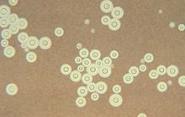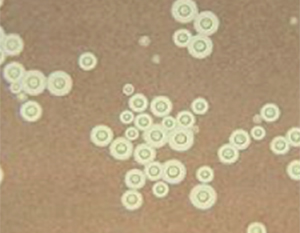Study: Microbes Affect Subtypes of Childhood Asthma In Different Ways

Microbes in the home affect both types of childhood asthma – allergic and non-allergic – but the specific types of microbes and how many there are can make a difference, according to a new study.
 |
| Prof. Jordan Peccia |
Karen Dannemiller, a former Ph.D. student in the lab of Prof. Jordan Peccia, Associate Professor of Chemical & Environmental Engineering, used next-generation DNA sequencing to put a finer point on the role of household microbes in childhood asthma. The results of their findings were published Feb. 5 in the Journal of Allergy and Clinical Immunology.
Nearly 200 children with asthma from Connecticut and Massachusetts participated in the study and were grouped according to whether their asthma was atopic or non-atopic (allergic or non-allergic) and by the severity of their asthma (from mild to severe). The participants were from an asthma cohort assembled by Dr. Brian Leaderer, Susan Dwight Bliss Professor of Epidemiology (Environmental Health) and deputy dean of the Yale School of Public Health.
 |
| Dr. Karen Dannemiller |
The researchers measured the diversity and concentration of fungi and bacteria in the homes of the children, using DNA sequencing and quantitative Polymerase Chain Reaction (qPCR). One month after the microbial communities were sampled, the children were tested to measure the severity of their asthma.
Among all groups, the children's asthma was made more severe when they were exposed to environments with high levels of household fungi. However, the specific type fungi had the greatest impact on children with allergies. For children without allergies, it was the concentration of the fungi that had the most effect on asthma severity.
 |
| Cryptococcus, a genus of fungus that may have an impact on asthma severity (Photo: CDC/Dr. Leanor Haley) |
"If you had asthma that's associated with allergies, it was fungal allergens - the types of organisms you were exposed to - that mattered," said Peccia, an associate professor of Chemical & Environmental Engineering. "If you didn't have this allergic asthma, it was just fungi in general – the number of fungi - that was important."
Peccia said there's a growing recognition that there are subtypes of asthma – asthmas associated with allergies and those that aren't – and this study and similar ones could inform housing recommendations designed to reduce asthma severity in children.
More research is needed to know whether these findings mean that atopic asthma should be treated differently from non-atopic asthma, Peccia said. For instance, both subtypes of asthma may benefit from a reduction in concentration of allergenic fungal species, but measures that reduce overall fungal concentration may be particularly important for non-allergic asthmatics. Allergic asthmatics, on the other hand, might benefit the most from lifestyle changes, the types of buildings they live and work in, and other factors that affect fungal community composition.

